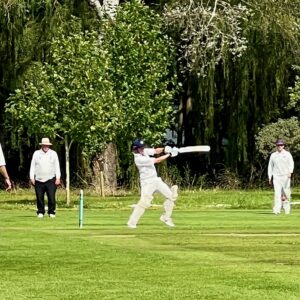Playfulness, Courage, Agility and Love
I am always on the lookout for examples of the creative process to inspire educational practices. And bingo (or slots in my case), I found it in Las Vegas at the Cirque du Soleil Michael Jackson ONE show. This breathtaking barrage of acrobats, aerialists and dancers, combined with expected and unexpected selections of Jackson’s music, made for an unforgettable multimedia multi-sensory experience. The guiding inspiration for ONE can be captured in four words: playfulness, courage, agility and love.
Jamie King, the director of the show, worked as a backup dancer for Jackson on his Dangerous world tour. He and his team used those four words to bring to life Jackson’s creative process. “It’s all about getting into Michael’s head and seeing the world as he saw it — that anything is possible,” declares King.
“It’s all about getting into Michael’s head and seeing the world as he saw it — that anything is possible.”
To “get into Michael’s head,” the team let playfulness, courage, agility and love guide them as they created a storyline about four misfits who learn to believe in themselves through music and dance. Playfulness: Michael was a “kid in a candy store,” says King. He loved to play and joke around and always wanted a playful environment around him to inspire innovation. Courage: Jackson would always “push the envelope on what music and dance can do.” He was a maverick, always asking “what if,” to do things no one ever did before and create experiences not previously thought possible. Agility: Michael was “all about the action,” King adds, daring to defy nature as he did in Smooth Criminal. The talented acrobats of Cirque du Soleil enabled King to use the human body to create an energy that everyone in the audience can feel. Finally, Love: Jackson was all about it; he always emphasized the importance of non-judgment and acceptance.
I thought how these four words apply to education after I saw the ONE show. While Jackson’s creativity was that of a multi-faceted artist who fused together various musical and dance styles and art forms, his creative approach can enhance classroom practice. Playfulness: Our political and business leaders tell us that creativity is the lynchpin of the 21st century economy. Successful businesses like Google have embraced playfulness as a means toward the creative ends. Even though schools have decreased the amount of time kids actually play, teachers can fill the gap by ensuring that their classrooms reflect playfulness. They can collaborate with their students in creating spaces (interlocking cardboard boxes or imaginary tree houses) where teachers and students spend the school day creating not memorizing. Courage: Educational research on best practices provides a general framework of what works. But what is often lacking is the courage among educators to push the envelope and abandon established policies and practices. As educational leader Alfie Kohn suggests, educators need to “dig deeper” and ask “what if,” resisting naysayers who reject new ideas because “parents will never…:, “we always do it this way…”, or “we can’t be the only school in the district to…”.
… a courageous educator questions … “My classroom may be quiet and orderly, but am I promoting intellectual and moral development, or merely compliance?” — Alfie Kohn
Agility: Given the rapid pace of change, both administrators and teachers need to focus on how to bring agility into school to move from good ideas to action. Jackson was “all about action” and successful educators will constantly figure and refigure ways they can adapt curriculum and pedagogy to the changing short- and long-term needs of the students. To do this, schools need agility when making decisions and input from their students, as opposed to current practices of slow-paced, top-down decision making policies. Finally, Love: In schools love is all about acceptance, empathy and non-judgmental practices. Students come from highly diverse socio-economic, cultural and gender-identity backgrounds. We increasingly recognize that they don’t fit into a “one size fits all” box. To accept and nurture diversity among students, we have the potential to unlock their creative potential and make school a place where students want to be.
The Michael Jackson ONE show not only entertained me but also inspired me to think about how its ideas and practices apply to creativity and innovation in schools and classrooms. Take a look at your environment and connect the dots.
















No Comments Yet!
You can be first to comment this post!